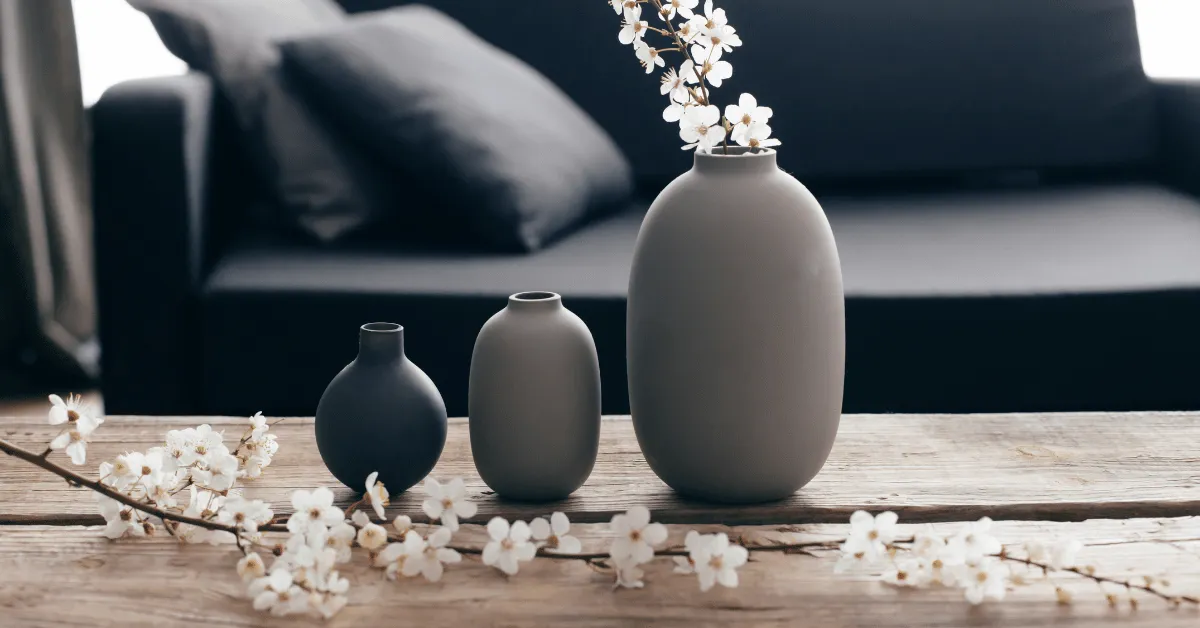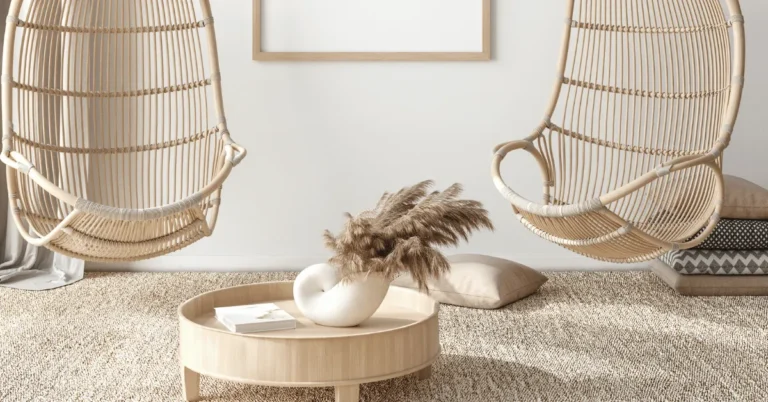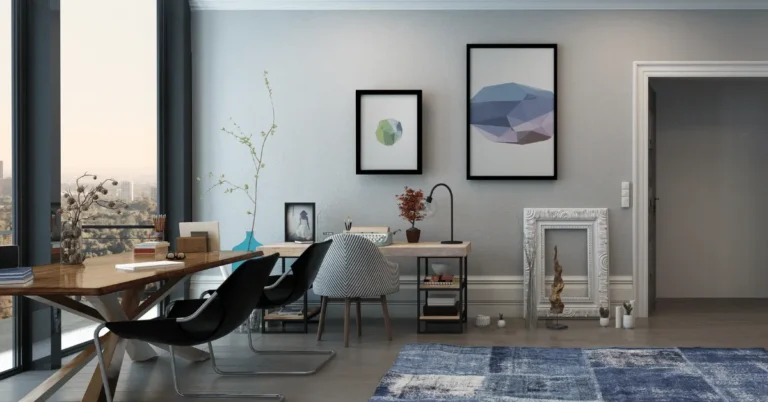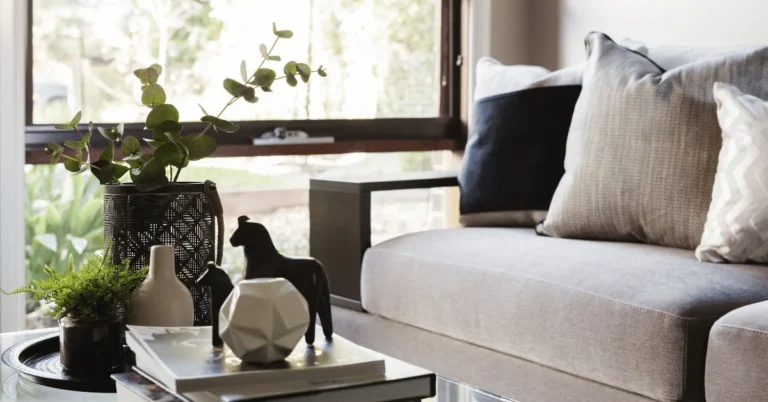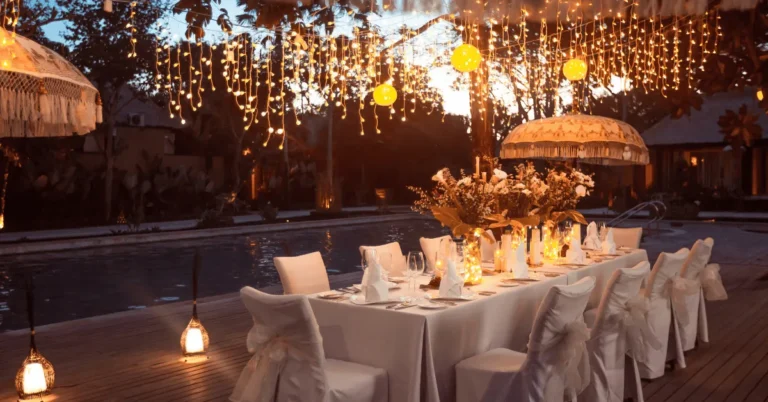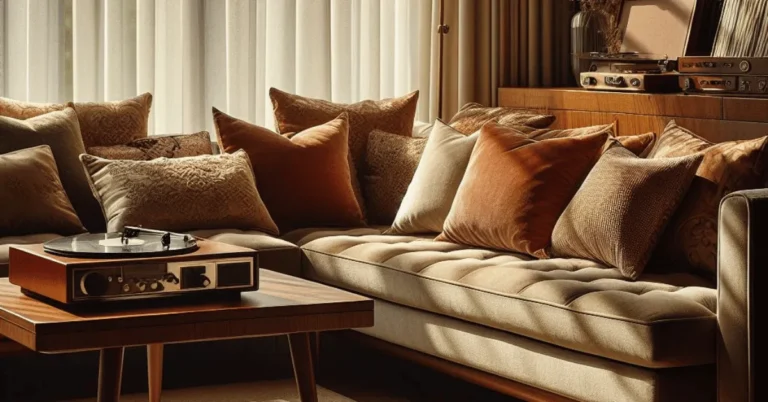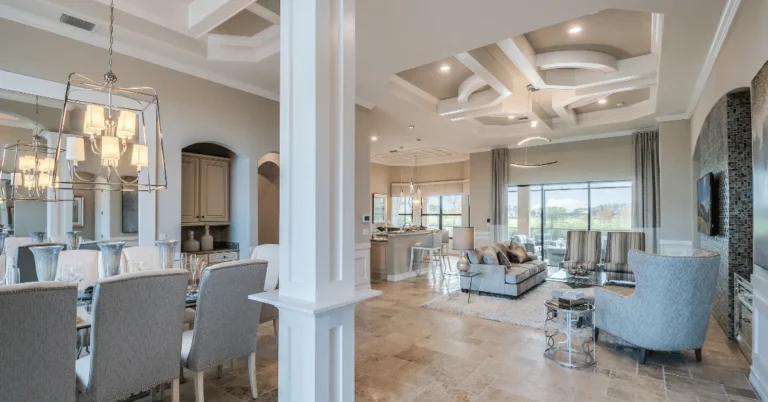What is Scandinavian Home Decor? (Incorporate Into Your Home)
In recent years, Scandinavian home decor has experienced a surge in popularity. Its simple and practical design attracts people, creating a peaceful and snug ambiance. But what exactly is Scandinavian home decor?
Simplicity, clean lines, and natural materials characterize Scandinavian home decor. It focuses on creating a warm and inviting space that is both functional and aesthetically pleasing.
The use of light colors, such as whites and pale neutrals, helps to enhance the natural light in the room and make it feel more spacious.
One key element of Scandinavian home decor is the concept of hygge. Hygge is a Danish word that translates to coziness and contentment. It is about creating a comfortable and inviting space where you can relax and enjoy the simple pleasures of life.
Table of contents
- What is Scandinavian Home Decor?
- What are the Key Principles of Scandinavian Design?
- How Does Scandinavian Design Embrace Nature and Simplicity?
- What Colors and Textures are Common in Scandinavian Design?
- How to Incorporate Scandinavian Design into Your Home?
- What Types of Furniture and Decorations are Used in Scandinavian Design?
- How Does Scandinavian Design Differ from Other Design Styles?
- What is the History of Scandinavian Design Style?
- What are Some Examples of Scandinavian Design in Real Homes?
- How to Balance Functionality and Aesthetics in Scandinavian Design?
- FAQs
- Final Thoughts
What is Scandinavian Home Decor?
Scandinavian home decor, also known as Nordic or Scandinavian style, is a design aesthetic that originated in the Nordic countries of Northern Europe. Simplicity, functionality, and minimalism characterize it.
In Scandinavian home decor, the focus is on creating a cozy and inviting atmosphere while maintaining a clean and clutter-free space.
Commonly used materials in Scandinavian home decor include natural elements like wood, stone, and leather, paired with a neutral color palette of whites, grays, and earthy tones.
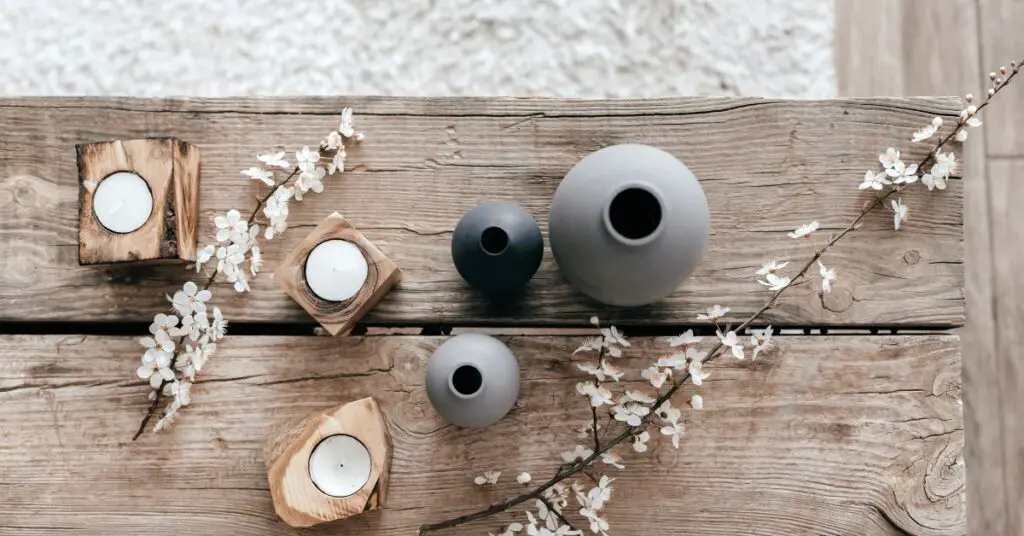
Scandinavian home decor embraces natural light and incorporates large windows to bring in as much daylight as possible. This creates a bright and airy feel, even during the long winter months.
Furniture in Scandinavian home decor is typically sleek and streamlined, with clean lines and minimal ornamentation. The emphasis is on functionality and practicality, with multi-purpose pieces and smart storage solutions.
In Scandinavian home decor, designers often draw inspiration from nature for accessories and decor, incorporating elements like plants, botanical prints, and organic textures. They use textiles such as wool and linen to infuse extra warmth and coziness.
What are the Key Principles of Scandinavian Design?
Scandinavian design embodies simplicity, functionality, and minimalism. It emerged in the 1950s in the Nordic countries and has since become a global phenomenon. The key principles of Scandinavian design can be summarized as follows:
- Simplicity: Scandinavian design focuses on clean lines, minimal ornamentation, and a sense of calmness. It embraces the concept of “less is more” and strives for simplicity in form and function.
- Functionality: Scandinavian design places a strong emphasis on practicality and usability. Furniture and objects are designed to be functional and serve a purpose, without sacrificing aesthetics.
- Natural Materials: Scandinavian design often incorporates natural materials such as wood, leather, and wool. Utilizing these materials imparts warmth and texture to the area, fostering a comfortable and welcoming ambiance.
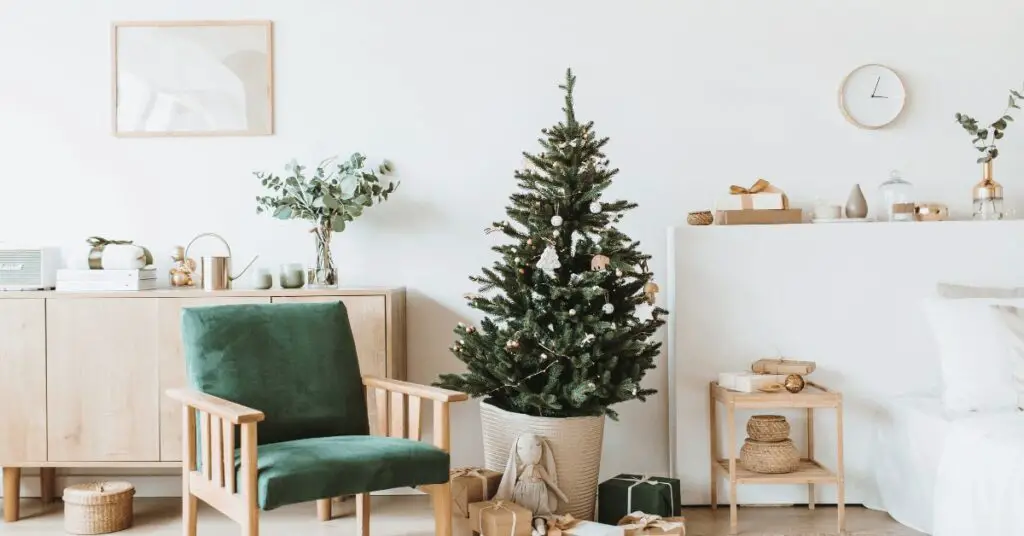
By combining simplicity, functionality, and natural materials, Scandinavian design creates spaces that are timeless, comfortable, and harmonious. It is a design style that values quality over quantity and focuses on creating a sense of balance and tranquility.
How Does Scandinavian Design Embrace Nature and Simplicity?
Scandinavian design is renowned for its ability to embrace nature and simplicity, creating spaces that are both functional and aesthetically pleasing.
This design style originated in the Nordic countries of Denmark, Norway, Sweden, Finland, and Iceland, where the harsh climate and beautiful landscapes have greatly influenced the way people live and design their homes.
One of the key principles of Scandinavian design is the use of natural materials. Wood, in particular, is a dominant feature in Scandinavian interiors, bringing warmth and a sense of connection to nature.
Whether it’s the exposed beams in a ceiling, the sleek wooden furniture, or the cozy wooden floors, the use of wood adds a touch of natural beauty to any space.
In addition to natural materials, Scandinavian design also focuses on simplicity and minimalism. Clean lines, uncluttered spaces, and a neutral color palette are common characteristics of this design style.
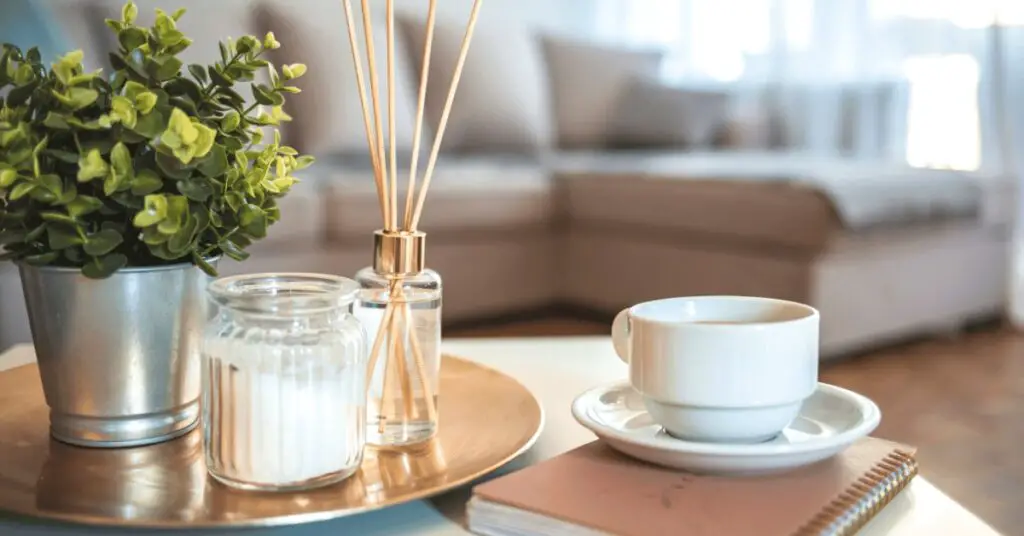
By keeping the design simple and free from unnecessary ornamentation, Scandinavian interiors create a sense of calm and tranquility.
Another way Scandinavian design embraces nature is through its incorporation of natural light. Large windows, light-colored walls, and minimal window treatments allow for maximum natural light to enter the space.
This not only creates a bright and airy atmosphere but also connects the indoors with the outdoors, blurring the boundaries between the two.
Overall, Scandinavian design embraces nature and simplicity by incorporating natural materials, clean lines, and ample natural light.
This design style creates spaces that are not only visually appealing but also promote a sense of well-being and harmony with the natural world.
What Colors and Textures are Common in Scandinavian Design?
Scandinavian design is known for its minimalistic and functional approach, and this extends to the colors and textures used in this design style.
The color palette of Scandinavian design is typically characterized by neutral tones, such as whites, grays, and muted pastels. These soft hues create a sense of calm and serenity in a space, allowing the other design elements to take center stage.
In addition to the neutral colors, Scandinavian design often incorporates pops of color to add visual interest and create a focal point.
This can be achieved through the use of vibrant accent pieces, such as pillows, rugs, or artwork. These splashes of color inject energy into the space while still maintaining the overall simplicity and harmony of the design.
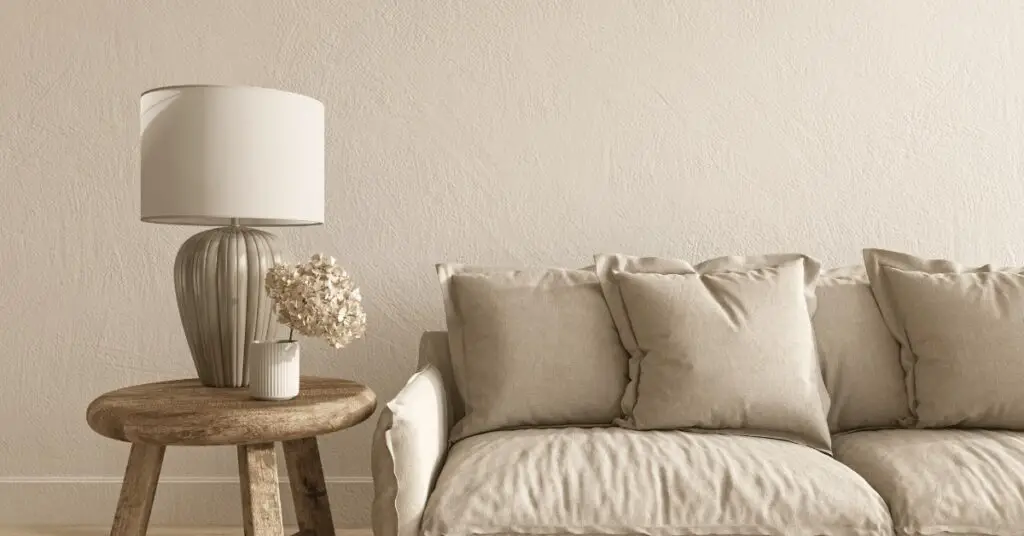
When it comes to textures, Scandinavian design embraces natural materials and textures that add warmth and coziness to a space.
Wood is a key element in Scandinavian design, whether it’s used for flooring, furniture, or accents. The natural grain and warmth of wood create a sense of connection to nature, which is an important aspect of Scandinavian design.
Other common textures in Scandinavian design include soft textiles, such as wool, linen, and sheepskin. These materials add a tactile element to the space, inviting people to touch and feel the textures.
They also contribute to the overall comfort and hygge (a Danish term for coziness) that Scandinavian design is known for.
How to Incorporate Scandinavian Design into Your Home?
Scandinavian design is celebrated for its embrace of simplicity, functionality, and minimalism. It is a design style that focuses on creating a calm and cozy atmosphere in your home.
If you are looking to incorporate Scandinavian design into your home, here are a few tips to get you started:
- Choose a neutral color palette: Scandinavian design often features a neutral color palette, with shades of white, grey, and beige. These colors create a sense of light and space in your home.
- Use natural materials: Incorporate natural materials such as wood, leather, and wool into your home decor. These materials contribute warmth and texture to your living space.
- Keep it clutter-free: Scandinavian design is all about simplicity and minimalism. Maintain a clutter-free space by showcasing only functional or sentimentally valuable items.
- Add greenery: Bring nature indoors by adding plants and flowers to your space. Not only do they add a pop of color, but they also improve air quality and create a sense of tranquility.
- Focus on lighting: Lighting is an essential element in Scandinavian design. Opt for natural light as much as possible and add layers of lighting with floor lamps, table lamps, and pendant lights.
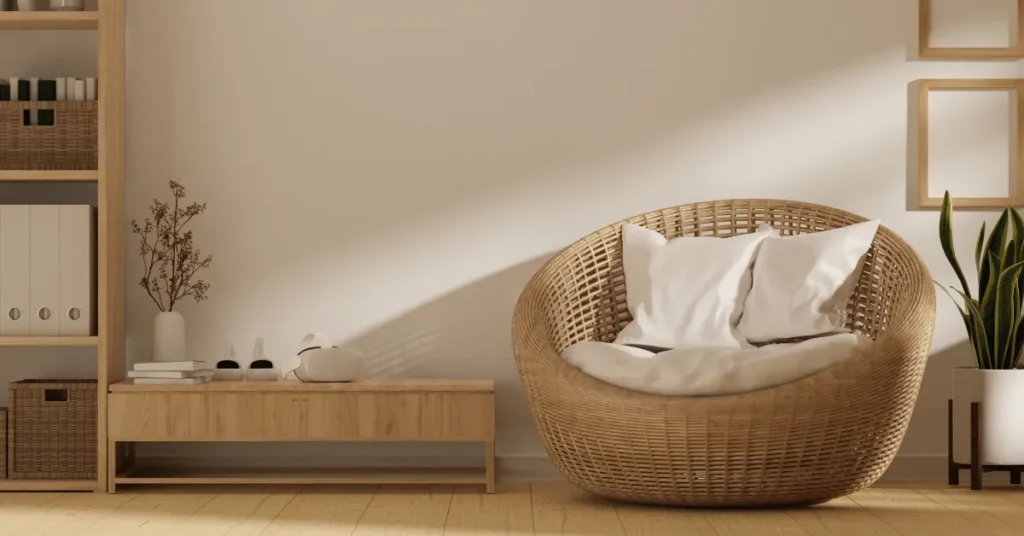
By incorporating these tips into your home, you can create a Scandinavian-inspired space that is both stylish and functional. Remember, the key to Scandinavian design is simplicity, so keep things clean and clutter-free.
What Types of Furniture and Decorations are Used in Scandinavian Design?
When it comes to furniture and decorations, Scandinavian design embraces simplicity, natural materials, and clean lines. Here are some key elements commonly used in Scandinavian design:
- Light-colored Wood: Scandinavian design often features light-colored wood, such as pine or birch, which adds warmth and a sense of nature to the space.
- Simple and Functional Furniture: Scandinavian furniture is characterized by clean lines, minimal ornamentation, and a focus on functionality. Pieces like the iconic Arne Jacobsen Egg Chair or the Ikea Billy Bookcase exemplify this style.
- Neutral Color Palette: Scandinavian interiors typically feature a neutral color palette, with white, gray, and beige as the dominant colors. This creates a calm and serene atmosphere.
- Textiles and Natural Materials: Soft textiles, such as wool or sheepskin, are often used to add warmth and texture to the space. Natural materials like leather, rattan, and linen are also commonly found in Scandinavian design.
- Minimalist Decorations: Scandinavian design embraces a less-is-more approach when it comes to decorations. Simple, functional, and well-crafted decorative pieces, such as ceramics, glassware, or artwork, are carefully selected to enhance the overall aesthetic.
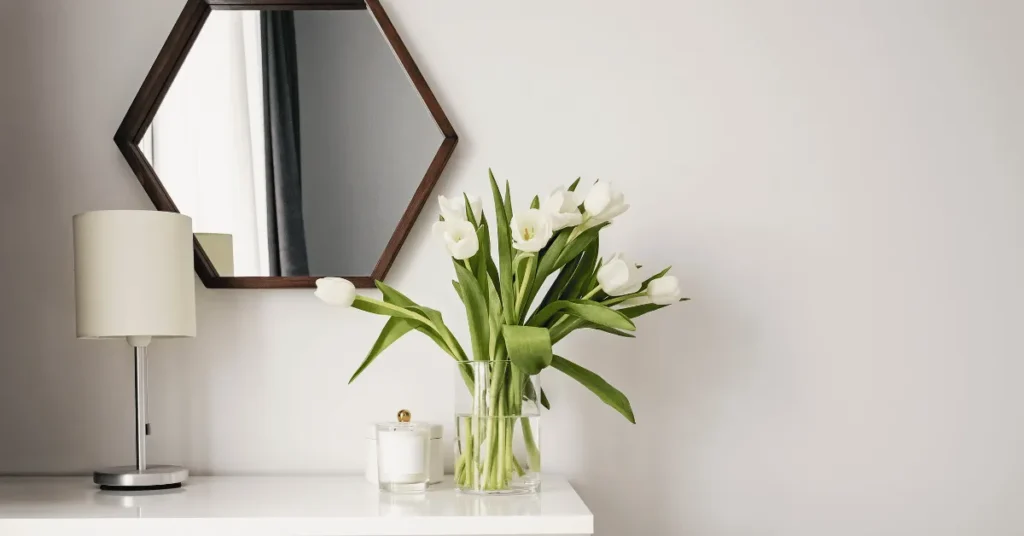
By incorporating these key elements, Scandinavian design creates a harmonious and inviting living space that is both visually pleasing and functional.
Whether you are looking to completely transform your home or simply add a touch of Scandinavian charm, these furniture and decoration choices are sure to bring that distinctive Nordic style into your space.
How Does Scandinavian Design Differ from Other Design Styles?
Scandinavian design has gained immense popularity in recent years, and for good reason. Its minimalistic yet functional approach sets it apart from other design styles, creating a unique and inviting aesthetic.
So, how does Scandinavian design differ from other design styles? Let’s take a closer look.
The Beauty of Simplicity
One of the key characteristics of Scandinavian design is its emphasis on simplicity. Clean lines, minimalistic furniture, and clutter-free spaces are common features of this style.
Unlike other design styles that may incorporate ornate details, Scandinavian design focuses on creating a sense of calm and tranquility through simplicity.
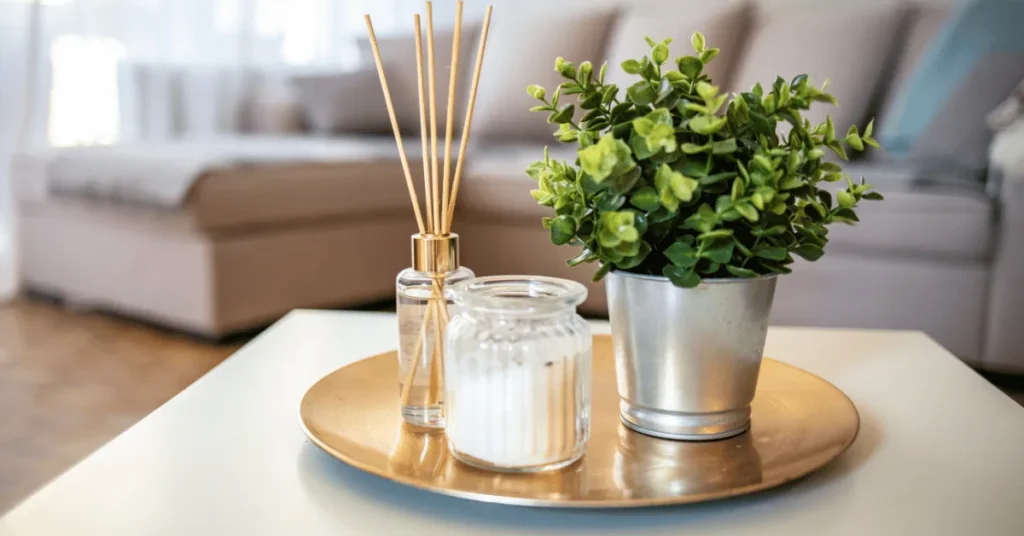
Natural Elements
Another defining aspect of Scandinavian design is its use of natural elements. From warm wood tones to natural fibers, this style brings the beauty of nature indoors.
The incorporation of natural materials not only adds visual appeal but also creates a cozy and welcoming atmosphere.

Functionality at Its Core
Scandinavian design is recognized for its focus on practicality. Furniture and decor are not just aesthetically pleasing but also serve a purpose.
Every piece is carefully chosen to maximize usability and practicality, without compromising on style.
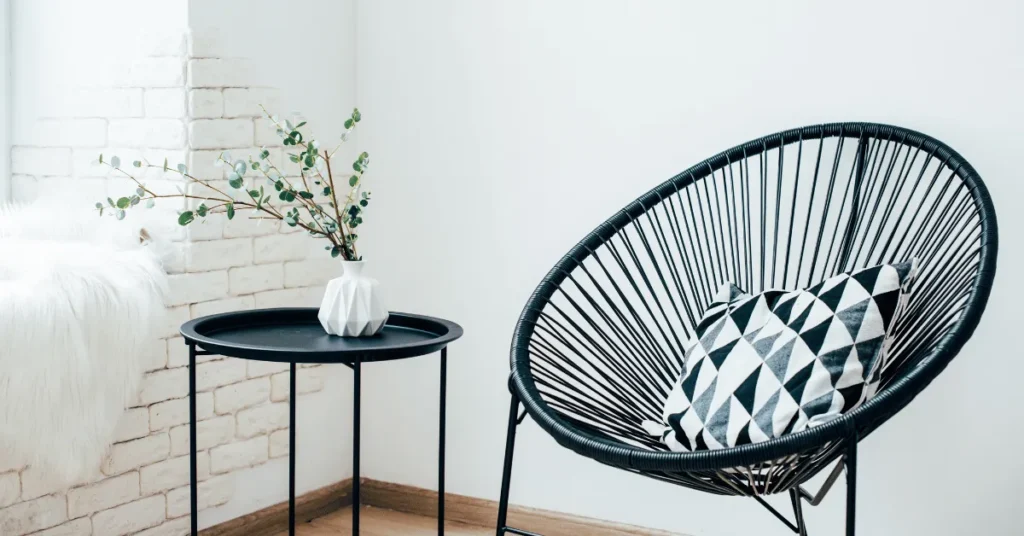
While other design styles may prioritize form over function, Scandinavian design strikes the perfect balance between the two, resulting in spaces that are both beautiful and highly functional.
Light and Airy Spaces
Scandinavian design is characterized by its light and airy spaces. The use of neutral color palettes, predominantly white, helps to create a sense of openness and brightness.
Natural light is maximized through the use of large windows, further enhancing the overall feeling of spaciousness.
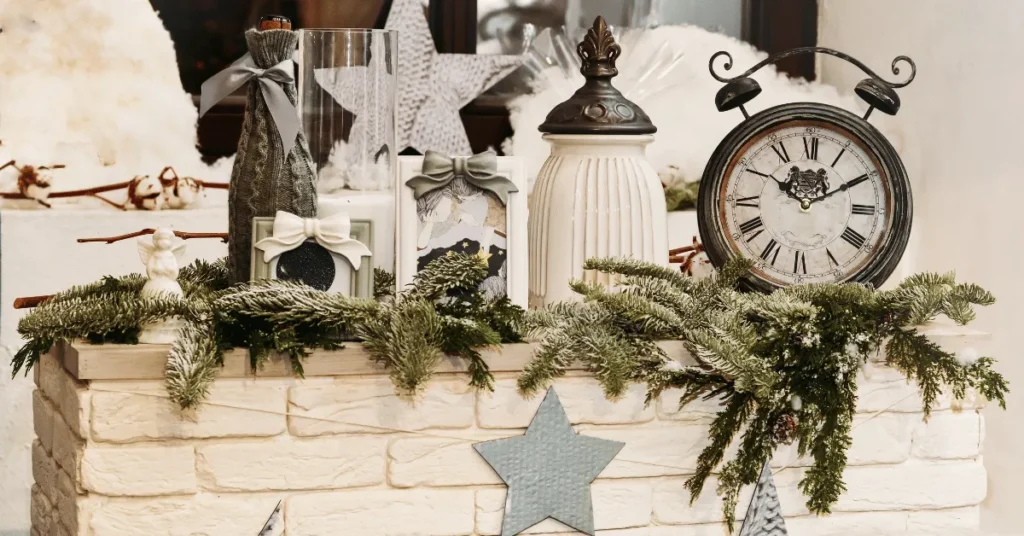
Warm and Cozy Textures
Despite its minimalistic approach, Scandinavian design is anything but cold. The use of warm and cozy textures, such as soft rugs, plush cushions, and knitted throws, adds a touch of comfort and hygge to the space.
This combination of sleek minimalism and inviting textures creates a harmonious and inviting atmosphere.
Scandinavian design stands out from other design styles due to its simplicity, use of natural elements, functionality, light and airy spaces, and warm textures.
Whether you’re looking to create a serene bedroom, a cozy living room, or a functional workspace, Scandinavian design offers a timeless and inviting aesthetic.
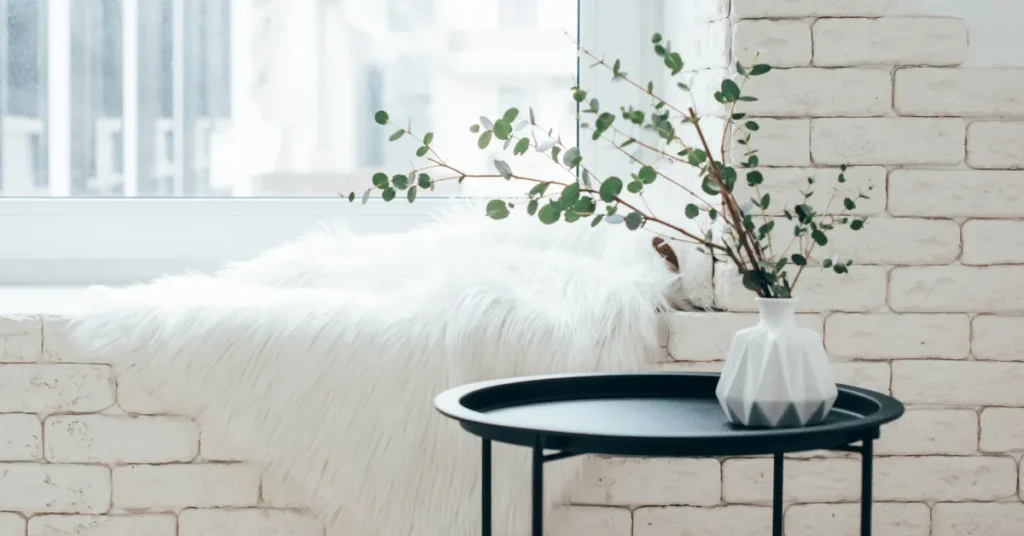
What is the History of Scandinavian Design Style?
Scandinavian design is celebrated for its simplicity, functionality, and minimalistic essence. But what is the history behind this iconic design style?
The roots of Scandinavian design can be traced back to the early 20th century when a group of talented designers and architects emerged in the Nordic region.
They sought to create a design aesthetic that was both practical and beautiful, reflecting the values and lifestyle of the Scandinavian people.
A significant contributor to the evolution of Scandinavian design was Alvar Aalto, a Finnish architect and designer.
His innovative use of natural materials, such as wood and leather, combined with clean lines and organic forms, set the foundation for the Scandinavian design style.

During the mid-20th century, Scandinavian design gained international recognition and popularity.
The simplicity and functionality of the furniture and home accessories appealed to people around the world, especially those seeking a more streamlined and clutter-free living environment.
Today, Scandinavian design continues to be highly influential and widely admired. Its timeless appeal and emphasis on quality craftsmanship have made it a favorite among interior designers and homeowners alike.
What are Some Examples of Scandinavian Design in Real Homes?
Scandinavian design is known for its simplicity, functionality, and minimalistic approach. It focuses on creating a serene and cozy atmosphere while incorporating natural elements and clean lines.
Let’s take a closer look at some real homes that beautifully showcase Scandinavian design:
1. The Nordic Retreat
In this cozy retreat, you’ll find light-colored walls, wooden floors, and plenty of natural light. The furniture is sleek and functional, with a mix of modern and vintage pieces. The overall color palette is neutral, with pops of muted pastels to add warmth.
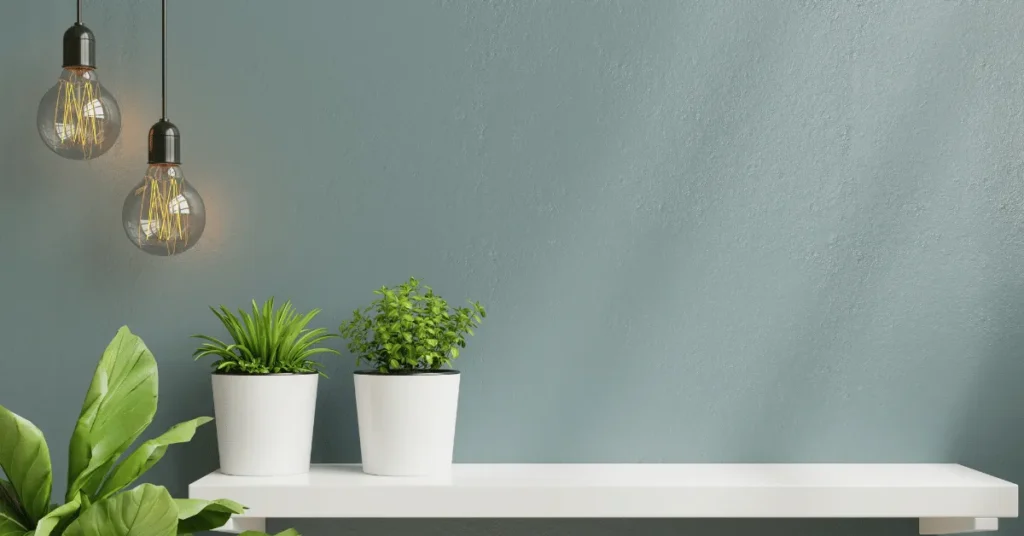
2. The Minimalist Haven
This home embraces the “less is more” philosophy of Scandinavian design. It features clean lines, open spaces, and a monochromatic color scheme.
The furniture is minimalistic, with a focus on functionality. Incorporating natural materials such as wood and stone introduces both warmth and texture.
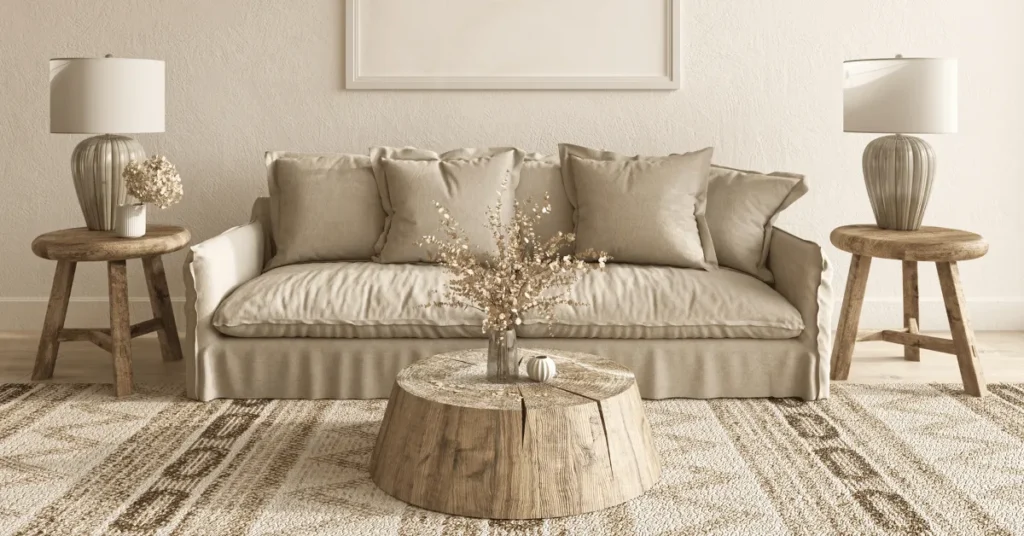
3. The Nature-inspired Oasis
This home brings the outdoors in, with large windows that offer stunning views of nature. The color palette is inspired by the Scandinavian landscape, with earthy tones and pops of green.
Natural materials like wood and rattan are used throughout the space, creating a warm and inviting atmosphere.
These are just a few examples of how Scandinavian design can be incorporated into real homes.
Whether you prefer a cozy retreat, a minimalist haven, or a nature-inspired oasis, there are endless possibilities to create a space that reflects the simplicity and beauty of Scandinavian design.
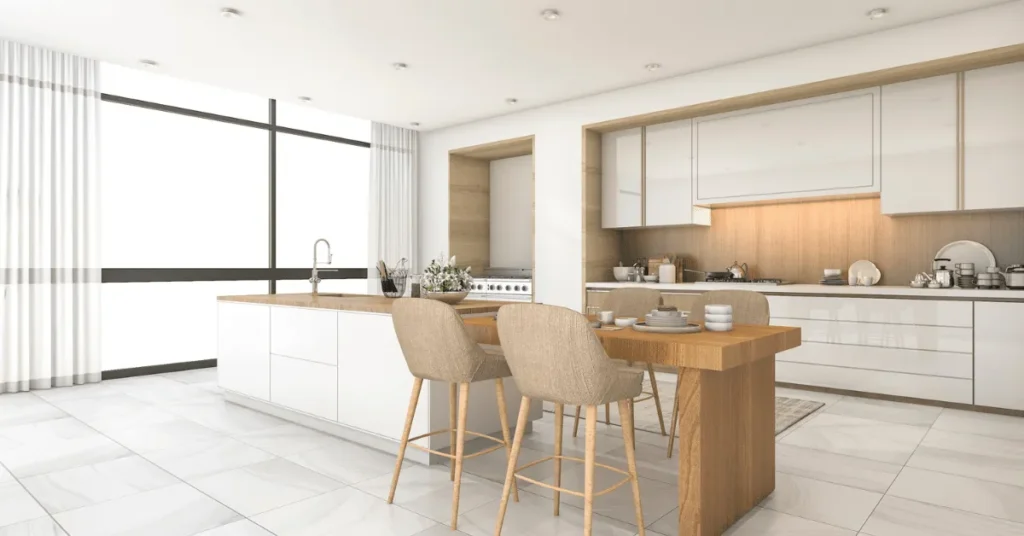
How to Balance Functionality and Aesthetics in Scandinavian Design?
Scandinavian design is known for its minimalist yet cozy aesthetic, focusing on clean lines, natural materials, and a neutral color palette.
But achieving the perfect balance between functionality and aesthetics can be a challenge. Here are some tips to help you create a harmonious and functional Scandinavian-inspired space.
1. Keep it Simple
Begin with decluttering your space, retaining only the essentials. Scandinavian design is all about simplicity, so avoid unnecessary decorations or furniture. Concentrate on establishing a spacious and fresh ambiance.
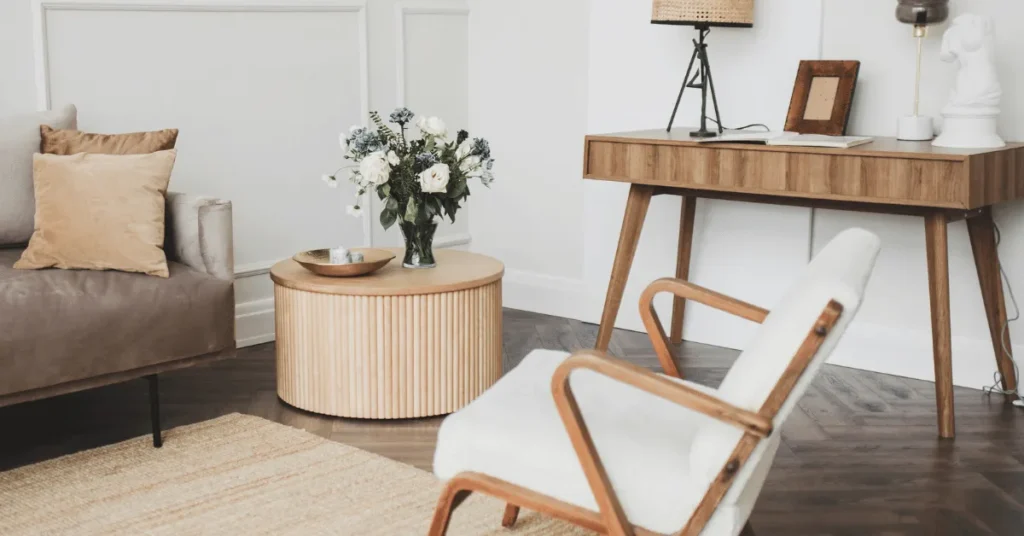
2. Embrace Natural Materials
Incorporate natural materials like wood, leather, and wool into your design. These materials not only add warmth and texture but also bring a sense of nature indoors, which is a key element of Scandinavian design.
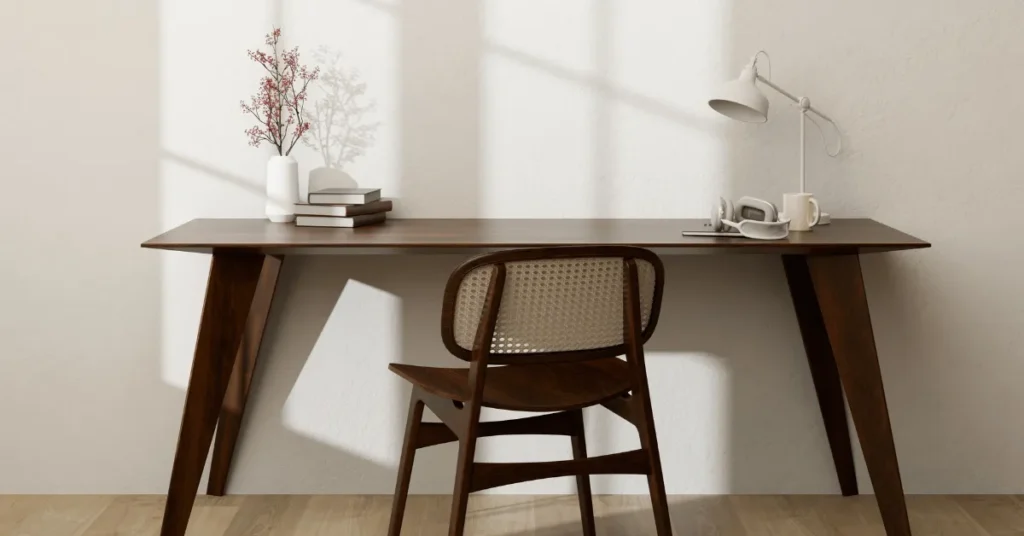
3. Optimize Storage
Functionality is crucial in Scandinavian design, so make sure to optimize your storage solutions. Use furniture with built-in storage or invest in stylish storage baskets and boxes to keep your space organized and clutter-free.
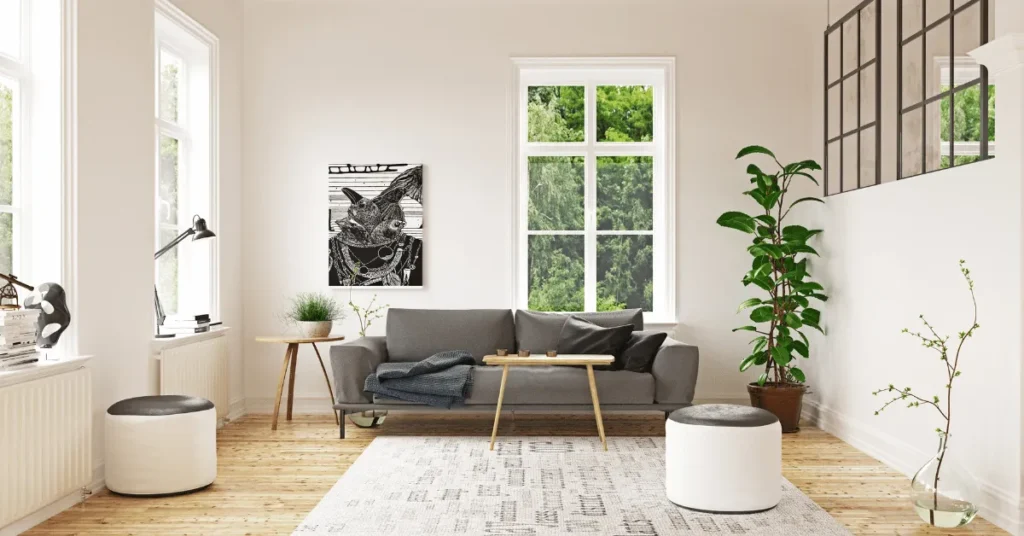
4. Play with Textures
Add visual interest to your space by playing with different textures. Mix smooth surfaces with rough textures to create a balanced and inviting atmosphere.
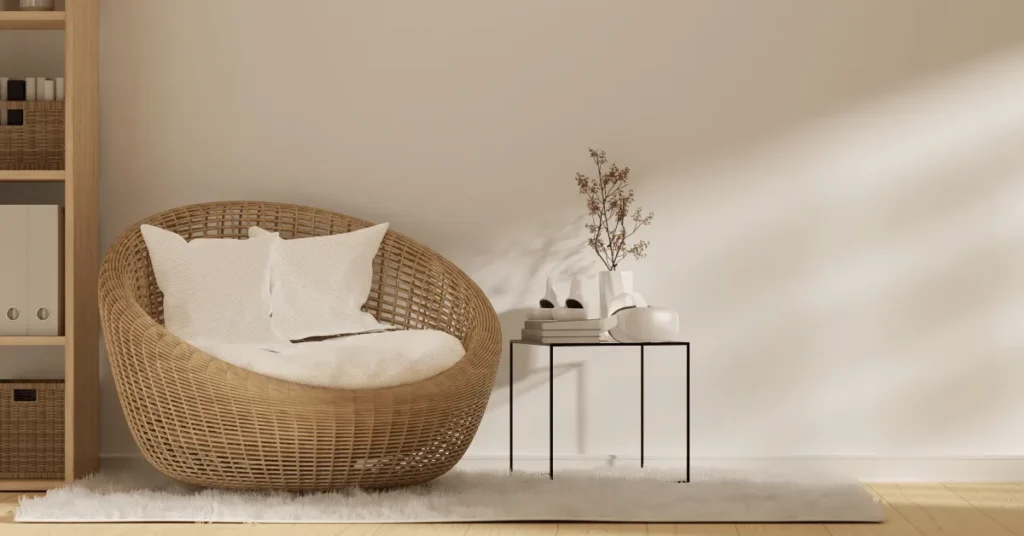
5. Let There be Light
Scandinavian design is all about maximizing natural light. Maintain clear windows and utilize sheer curtains to welcome in the gentle sunlight. Additionally, incorporate light-colored furniture and mirrors to reflect and amplify the natural light.
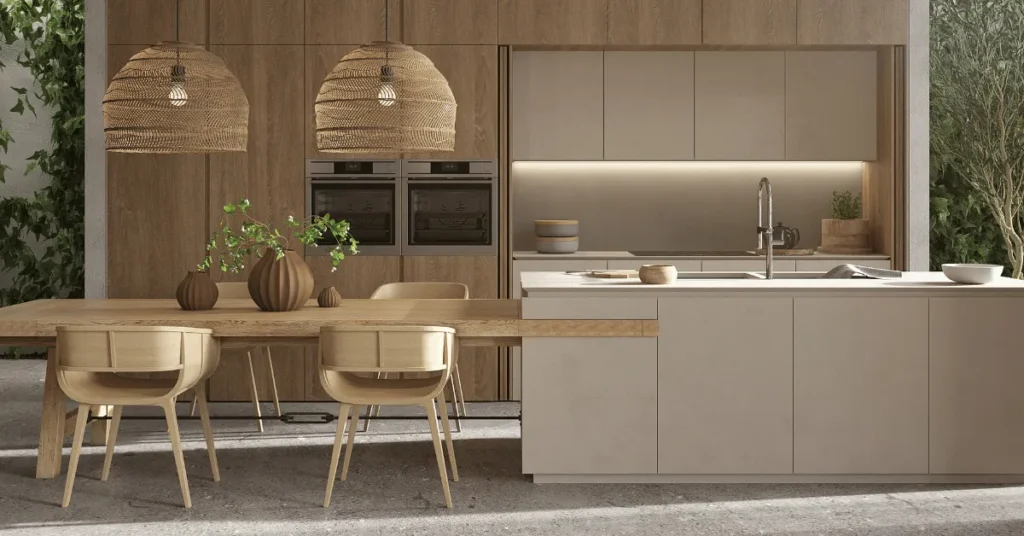
By following these tips, you can achieve the perfect balance between functionality and aesthetics in your Scandinavian-inspired design. Remember, less is more, and simplicity is key in creating a cozy and harmonious space.
FAQs
Scandinavian home decor is a design style that originated in the Nordic countries of Sweden, Norway, Denmark, and Finland. It is characterized by simplicity, functionality, and a focus on natural materials and light colors.
The key elements of Scandinavian home decor include clean lines, minimalism, natural light, and a neutral color palette. Furniture is often made from light-colored woods, and textiles are typically simple and made from natural materials like linen and wool.
To incorporate Scandinavian home decor into your space, start by decluttering and keeping only the essentials. Use light colors on the walls and choose furniture with clean lines. Add cozy textiles like throws and pillows, and bring in natural elements like plants.
Absolutely! Scandinavian home decor can be easily mixed with other design styles. For example, you can add a touch of bohemian or industrial style to create a more eclectic look.
You can find Scandinavian home decor items at various retailers, both online and offline. Some popular brands that specialize in Nordic design include IKEA, Muuto, and Hay.
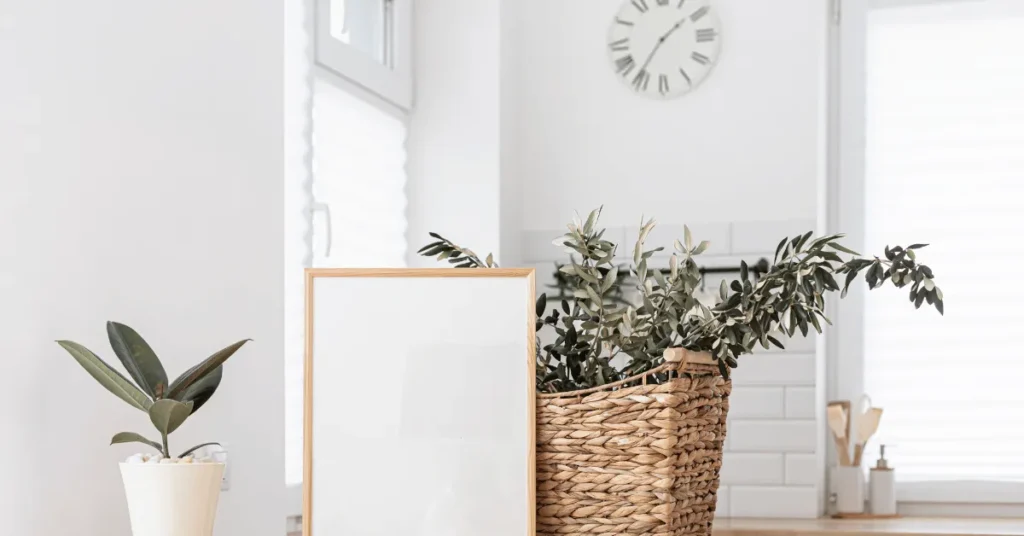
Final Thoughts
Scandinavian home decor is a design style that embraces simplicity, functionality, and natural materials.
By incorporating clean lines, light colors, and cozy textiles, you can create a space that is both stylish and inviting.
Whether you prefer a purely Scandinavian look or want to mix it with other styles, this design aesthetic is versatile and timeless.
Read More:
